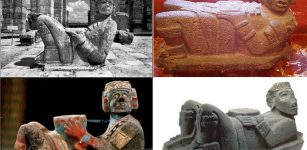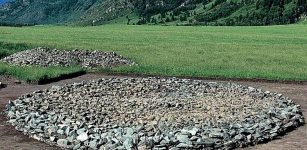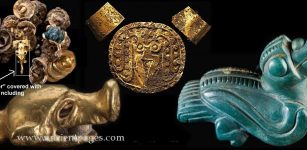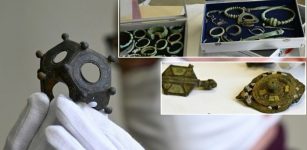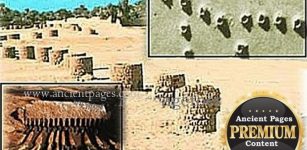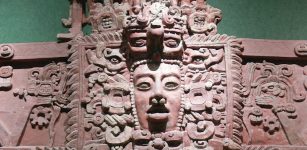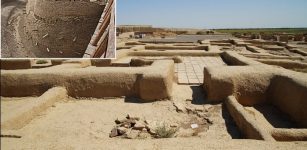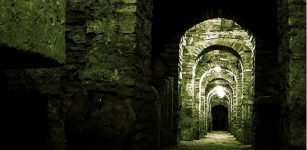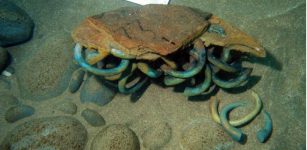New Method Distinguishes Between Egyptian And Palestinian Glass During Roman Times
Conny Waters - AncientPages.com - Now, we can determine the origin of colorless glass from the Roman period, according to researchers from the Aarhus University and the and University of Münster.
The Roman glass industry was prolific, producing wares for drinking and dining, window panes, and colored glass 'stones' for wall mosaics. One of its outstanding achievements was the production of large quantities of a colorless and clear glass, which was particularly favored for high-quality cut drinking vessels.
 One of the colorless Roman glass sherds from Jerash, Jordan, analyzed in this study. Purple splashes are iridescence due to weathering. Credit: Danish-German Jerash Northwest Quarter Project.
One of the colorless Roman glass sherds from Jerash, Jordan, analyzed in this study. Purple splashes are iridescence due to weathering. Credit: Danish-German Jerash Northwest Quarter Project.
The fourth-century Price Edict of the emperor Diocletian refers to colorless glass as 'Alexandrian', indicating an origin in Egypt. However, large amounts of Roman glass are known to have been made in Palestine, where archaeologists have uncovered furnaces for colorless glass production.
Such furnaces have not been uncovered in Egypt, and hitherto, it has been very challenging to scientifically tell the difference between glasses made in the two regions.
So, what does the study show?
The study shows that the isotopes of the rare element hafnium can be used to distinguish between Egyptian and Palestinian glass and provide compelling evidence that the prestigious colorless glass known as 'Alexandrian' was indeed made in Egypt.
"Hafnium isotopes have proved to be an important tracer for the origins of sedimentary deposits in geology, so I expected this isotope system to fingerprint the sands used in glassmaking", Gry Barfod. Professor at Aarhus University Charles Lesher said in a press release.
Hafnium isotopes have not previously been used by archaeologists to look at the trade-in ancient man-made materials such as ceramics and glass.
"These exciting results clearly show the potential of hafnium isotopes in elucidating the origins of early materials. I predict they will become an important part of the scientific toolkit used in our investigation of the ancient economy," co-author Professor Ian Freestone, University College London.
The sand along the Mediterranean coast of Egypt and Levant (Palestine, Israel, Lebanon, and Syria) originates from the Nile and is ideal for glass production because it naturally contains the amount of time needed to keep the glass stable and not degradable. In the Levant, they made transparent glass by adding manganese—it was good, but not perfect.
The second type of Roman glass, which scientists now show came from Egypt, the glassmakers made transparent by adding antimony (Sb), which made it crystal clear; therefore, this was the most valuable glass.
The study is published in Scientific Reports.
Written by Conny Waters - AncientPages.com Staff Writer




